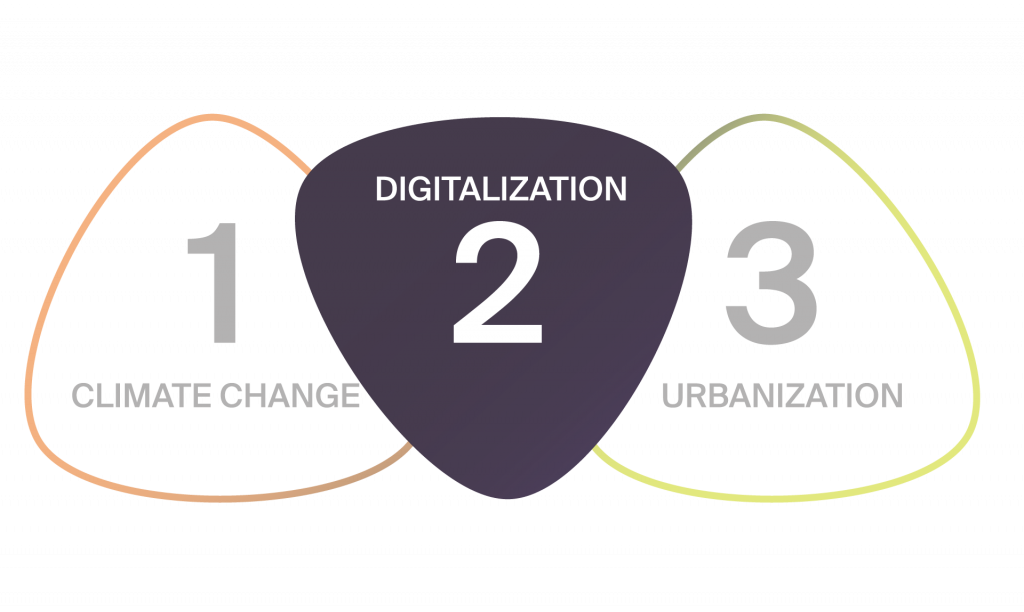
The digital transformation is producing an unprecedented amount of data with a strong potential to address sustainability challenges. Digital technology is paving its way to help design, construct, maintain, transform, and destroy buildings, technical and territorial networks, and other infrastructures. Today, the resources required generate significant amounts of greenhouse gas emission that may be avoided with data analysis.
A cluster to address one of ENAC’s 3 sustainability challenges

The “Digitalization of Infrastructures and Cities” cluster supports the transition to a sustainable, resource-efficient society by developing tools and methods for improved infrastructure and city management.
Three research priorities
The new “Baukultur” aims to design buildings and infrastructures with a net-zero carbon footprint throughout their lifetime while being aesthetically pleasing, versatile and adaptable to changing needs (factoring in construction materials and energy consumption).
Digital advances offer exciting new opportunities for research and practice:
- Digital design: parametric design, building information modeling (BIM) and generative design.
- Digital manufacturing: 3D and 4D printing for the recycling of construction materials, automated production, and additive manufacturing.
- Digital operation: smart buildings, autonomous infrastructure and material passports for recycling and reuse.
This cluster also focuses on the emergence of new materials with alternative environmental footprints and lifecycles.
ENAC is setting up new teaching programs to provide future architects and engineers with the necessary digital and professional skills to ensure a transition to this new culture of constructing and building.
New sensing technologies enable the design and deployment of large data collection systems that gather amounts of information at multiple spatial and temporal scales.
This approach supports the development of strategies to maintain, operate and transform existing buildings and infrastructures (mobility, energy, water, etc.) as society needs evolve.
ENAC researchers use cutting-edge modeling and processing methods taking into account the multiple factors needed to develop sustainable infrastructure management policies.
A digital twin is a digital representation of a physical infrastructure coupled with real-time sensing data. By adding simulation layers to it, engineers can predict how a given system will respond to different load scenarios. Researchers are developing augmented digital twins at different scales to support infrastructure design, operation, and maintenance.
ENAC also explores ways to address uncertainty – a key factor in risk-assessment and decision-making models – by examining the potential value of analytical tools such as artificial intelligence (AI), data analysis and optimization, and mathematical modeling.
.
Interdisciplinarity in teaching
ENAC is setting up new teaching programs to provide future generations of architects, civil and environmental engineers with the skills needed to ensure ecological and social transition to digitalized infrastructures and cities.
.